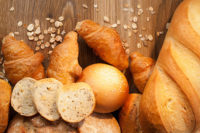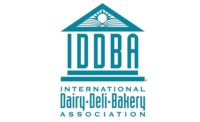In-Store Bakery Trends
Bake it Fresh for Success
A bakery that doesn’t bake? Yes, it’s true. Challenged by a lack of skilled labor to staff their in-store bakeries, a growing number of supermarkets are taking shortcuts and turning to thaw-and-sell products. In some cases, the in-store bakeries simply take baked goods delivered by wholesale bakeries and put them in displays.
By eliminating on-premise baking, these retailers are playing with fire, says Kevin Malchoff, group president of Rich Products U.S./Canada Group. At worst, they’re opening up opportunities for their competitors to take business from them.
“I believe what they are doing is moving away from the quality their customers expect, and that’s why foodservice chains like Panera Bread have swung to life,” Malchoff says. “The consumer is finding other sources for bakery products instead of the traditional supermarket.”
Simply put, thaw-and-serve products are not as tasty as fresh-baked ones. Rich Products works with its customers to do as much on-premise baking as possible, notes Ray Burke, president of Rich’s in-store bakery division.
“Rich’s is a company that believes the differentiation of a bakery is having an oven and having that fresh aroma permeate the entire store,” Burke explains. “Products that lend themselves to giving the retailer an advantage go through the oven, and they are the products that Rich’s focuses on.
“Having said that, we know that not every product will go through an oven,” he adds. “The key is to choose where you are going to use labor in the bakery to maximize value and the retailer’s profits.”
Although not in all cases, Rich’s generally encourages in-store bakeries to focus on cakes and other high-end desserts for maximizing profits. For cheesecakes and ice cream cakes, Rich’s uses a fully finished format. For special-occasion cakes, it uses a component format where decorators use icing and cake decorations to finish off un-iced layer cakes, sheet cakes and cupcakes. Most retailers use a combination of formats depending on the amount of skilled labor in their stores.
“Cake decorating is an area where labor dollars that are spent really add value to the retailer and to the whole experience of going to the fresh bakery,” Burke says.
The company has dozens of technicians who travel across the nation to train workers on some of the art of baking. It also has a cake library with an online cake decorating support program Web site, where retailers can go and choose from 1,000 decorating ideas and instructions.
Often, the company proposes managing the bakery by time of day. For instance, it has an AM Sweets Program where it helps the retailer determine which Danish, puff pastry, croissants and other baked goods should go into the oven to maximize sales.
Specifically in the donut category, Rich’s is promoting fried-and-finished donuts. The already fried donuts are heated to reconstitute themselves, then iced or glazed and put in a display case or packaged. The format allows retailers the ability to produce a fresher product during peak hours.
“The day of the week and the traffic in the store dictates where the concentration of labor is,” Burke notes. “Especially, during peak time from Thursday through Sunday, you want to get the fresh-baked aroma throughout the store.”
The critical part is to rely on innovation to entertain consumers and to drive impulse sales. However, if labor is a big issue, even doing at least a little baking goes a long way in improving a grocer’s image with consumers.





